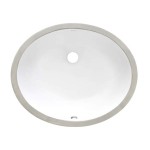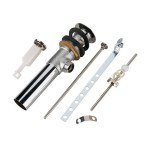Bathroom Vanity With Sink 30 Inches: A Comprehensive Guide
The 30-inch bathroom vanity with sink represents a common and practical solution for bathrooms of various sizes. It strikes a balance between providing adequate storage and functionality without overwhelming smaller spaces, while also offering a stylish and functional addition to larger bathrooms. This article aims to provide a comprehensive overview of 30-inch bathroom vanities with sinks, covering their benefits, design considerations, installation aspects, and maintenance tips.
A bathroom vanity is a cabinet that typically houses a sink and provides storage space for toiletries, cleaning supplies, and other bathroom essentials. The addition of a sink integrated into the vanity, or designed to be placed on top of it, makes it a central element of the bathroom's functionality. Choosing the right vanity involves considering factors like size, style, material, and budget.
The 30-inch width is a popular choice due to its versatility. It's large enough to offer a reasonable amount of counter space and storage, yet compact enough to fit into a powder room, guest bathroom, or a main bathroom where space is limited. With a wide array of designs available, from traditional to modern, finding a 30-inch vanity that complements the overall aesthetic of the bathroom is typically achievable.
Key Benefits of a 30-Inch Bathroom Vanity With Sink
Several advantages contribute to the popularity of the 30-inch bathroom vanity with sink. These benefits address both functional and aesthetic needs, making them a solid choice for many homeowners.
Space Efficiency: In bathrooms where space is at a premium, a 30-inch vanity provides a practical solution. It maximizes functionality without occupying excessive floor space. This is particularly beneficial in smaller bathrooms often found in apartments, condominiums, or older homes. The compact size allows for better movement and prevents the bathroom from feeling cramped.
Adequate Storage: Despite its relatively small footprint, a 30-inch vanity offers a surprising amount of storage. Many models incorporate cabinets, drawers, or a combination of both, providing ample space to store toiletries, towels, and other bathroom necessities. This helps to keep the countertop clutter-free and contributes to a more organized and visually appealing bathroom.
Versatile Design Options: 30-inch vanities are available in a wide variety of styles, materials, and finishes, allowing for seamless integration with various bathroom designs. From traditional vanities with ornate details to sleek, modern vanities with clean lines, there is a 30-inch vanity to suit nearly any aesthetic preference. The range of materials, including wood, MDF, and even metal, further enhances the design possibilities.
Cost-Effectiveness: Compared to larger vanity sizes, 30-inch vanities are generally more affordable. This makes them an attractive option for homeowners on a budget or those looking to renovate multiple bathrooms. The lower material costs and simpler construction contribute to the overall affordability.
Design Considerations When Selecting a 30-Inch Vanity
Choosing the right 30-inch bathroom vanity involves carefully considering several design aspects to ensure it aligns with the bathroom's overall aesthetic and functional requirements.
Style and Aesthetics: The vanity should complement the existing style of the bathroom. If the bathroom has a traditional design, a vanity with raised panel doors, ornate hardware, and a classic finish would be a suitable choice. For a modern bathroom, a vanity with clean lines, a minimalist design, and a sleek finish would be more appropriate. Consider the color scheme of the bathroom and choose a vanity that complements or contrasts it effectively.
Material and Construction: The material of the vanity significantly impacts its durability, appearance, and cost. Solid wood vanities are generally the most durable but also the most expensive. MDF (Medium Density Fiberboard) vanities are a more affordable option that can still offer good durability when properly sealed. The construction quality is also important. Look for vanities with solid joints, sturdy hardware, and a durable finish.
Sink Type and Faucet Compatibility: The type of sink that will be used with the vanity is another important consideration. Common sink types include undermount sinks, which are installed below the countertop; above-counter sinks, which sit on top of the countertop; and integrated sinks, which are molded into the countertop. Ensure that the chosen sink type is compatible with the vanity design and that the faucet holes are correctly positioned. The faucet style should also complement the vanity and sink.
Storage Configuration: Assess the storage needs and choose a vanity with a configuration that meets those needs. Consider the number of drawers and cabinets, as well as the size and layout of the storage compartments. Some vanities offer adjustable shelves or specialized storage features, such as built-in organizers, which can further enhance functionality. A vanity with open shelving can also provide storage for frequently used items or decorative elements.
Countertop Material: The countertop material contributes significantly to the vanity's overall appearance and durability. Common countertop materials include granite, marble, quartz, and laminate. Granite and quartz are durable and resistant to stains and scratches, but they can be more expensive. Laminate is a more affordable option that is available in a wide range of colors and patterns.
Installation and Maintenance of a 30-Inch Bathroom Vanity
Proper installation and regular maintenance are essential for ensuring the longevity and optimal performance of a 30-inch bathroom vanity. Whether installing the vanity independently or hiring a professional, understanding the process and maintenance requirements is crucial.
Installation Process: The installation process typically involves several steps, including removing the old vanity (if applicable), preparing the plumbing, installing the new vanity, connecting the sink and faucet, and sealing the edges. Before starting the installation, ensure that the water supply is shut off and that all necessary tools and materials are readily available. It is important to follow the manufacturer's instructions carefully to avoid damaging the vanity or plumbing. A professional plumber may be required to ensure proper plumbing connections and prevent leaks.
Plumbing Considerations: When installing a new vanity, it is important to ensure that the plumbing connections are properly aligned and sealed. Check the drainpipe and water supply lines for any leaks. If replacing an existing vanity, it may be necessary to adjust the plumbing to accommodate the new vanity's dimensions. Flexible supply lines can be helpful in connecting the water supply to the faucet. Using plumber's tape or pipe dope to seal the threads can help prevent leaks.
Sealing and Caulking: To prevent water damage and mold growth, it is essential to seal the edges of the vanity where it meets the wall and floor. Use a waterproof caulk to seal these gaps. This will prevent water from seeping behind the vanity and causing damage. Regularly inspect the caulk for cracks or gaps and reapply as needed.
Cleaning and Maintenance: Regular cleaning is essential for maintaining the appearance and hygiene of the vanity. Wipe down the countertop and sink regularly with a mild soap and water solution. Avoid using abrasive cleaners or harsh chemicals, as they can damage the finish. For wood vanities, use a furniture polish to protect the wood and maintain its shine. Regularly clean the inside of the cabinets and drawers to prevent the buildup of dust and debris.
Preventing Water Damage: Water damage is a common issue with bathroom vanities. To prevent water damage, avoid leaving standing water on the countertop. Wipe up spills promptly and ensure that the sink and faucet are properly sealed. Use a bath mat to catch water that may splash out of the shower or tub. Install a moisture sensor to detect leaks early on and prevent significant water damage.
In conclusion, the 30-inch bathroom vanity with sink is a versatile and practical choice for bathrooms of various sizes, offering a balance of space efficiency, adequate storage, and diverse design options. Careful consideration of design elements, proper installation, and consistent maintenance are crucial for maximizing the vanity's lifespan and overall satisfaction.

Home Decorators Collection Caville 30 In W X 22 D 34 H Single Sink Bath Vanity Almond Latte With Carrara Marble Top

Happy 30 In W X 18 D 34 H Bathroom Vanity Gray With White Carrara Marble Top Sink

Moorside 30 In W X 19 D 34 H Single Sink Bath Vanity Sweet Maple With White Engineered Stone Top

Modern 30 Single Sink Freestanding Bath Vanity With Storage Cabinet Festivo

30 Inch Farmhouse Smokey Celadon Single Sink Bathroom Vanity Unique Vanities

Clady 31 In W X 19 D 35 H Single Sink Freestanding Bath Vanity White With Silver Ash Cultured Marble Top

30 Bathroom Vanity With Top Sink 2 Drawers And 1 Tip Out Drawer Gray Modernluxe

Eucoco 30 Inch Bathroom Vanity With Sink Storage Cabinet Doors Drawers And Adjustable Shelf Solid Wood Frame Ceramic Brown

Home Decorators Collection Doveton 30 In Single Sink Freestanding Weathered Tan Bath Vanity With White Engineered Marble Top Fully Assembled

30 Inch Bathroom Vanity Vessel Sink Style Giovanni







